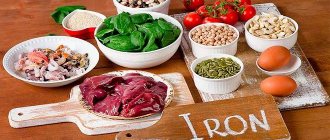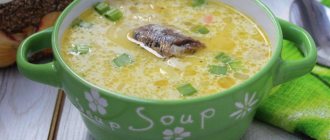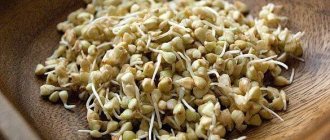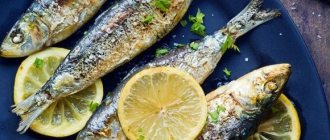Vegetable fat: what is it?
Vegetable fats are lipid compounds contained in the nutritious parts of plants. Humans eat such sources of these substances as nuts, oil-rich plant seeds, olive and avocado pulp, fruit seeds, and grain germs.
The listed products also serve as raw materials for extracting oils that are actively used in cooking and the food industry.
Healthy fats: a list of foods worth paying attention to
Ideally, you should be getting both monounsaturated and polyunsaturated fats from your diet, focusing primarily on omega-3s. Until now, these two types of fats were considered healthy and suitable for daily consumption. Some foods on our list contain saturated fat, but it's better to stick to these foods than processed ones.
We recommend adding these high-fat foods to your diet. But you need to gradually introduce high-fat foods into your diet, starting two to three times a week. Also, if you increase your fat intake, then reduce your carbohydrate intake.
But now we will not go into such details. Just keep in mind: you shouldn't eat the pie if you've eaten a lot of fatty foods.
Dairy
- Yogurt
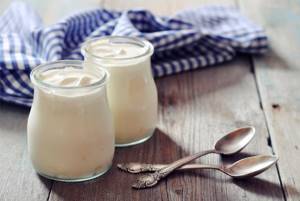
Yogurt will help improve digestion through the use of probiotics or live cultures and, according to research from the American National Library of Medicine, may also help with weight loss.
Thanks to the nutrients, yogurt energizes and provides a dose of calcium and protein.
Please be vigilant when purchasing yogurt: pay attention to labels to avoid products laden with sugar. It's better to dilute the yogurt yourself using what you like, such as honey, fresh blueberries and cinnamon.
- Cheese

Cheese is also an excellent source of protein, calcium and minerals, and may be most beneficial for appetite control.
Alana Aragona, a nutritionist and men's weight management coach, once said: “The combination of protein and fat in regular full-fat cheeses is very rich... As a result, snacking on full-fat cheeses keeps your appetite at bay for hours; I have found that this reduces the amount of food my clients consume in subsequent meals.”
Since this is still a very high-fat food, pay attention to portion sizes and adjust them as necessary.
Oils
- Olive oil
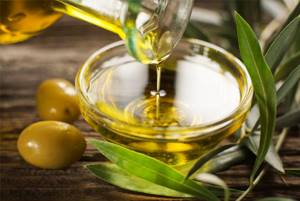
Although the next two products on the list were discussed above, they are still worth mentioning. Olive oil may contain more saturated fat than other oils, but its nutritional benefits greatly outweigh this disadvantage.
What does this product do useful?
As a result of research, it was found that olive oil contains many antioxidants. Olive oil can actually prevent the development of cancer cells and even cause their death. It also has powerful anti-inflammatory properties, thanks to a polyphenol called oleacansal. Oleacansal directly targets inflammation and pain like popular NSAID drugs, but without the side effects.
- Coconut oil

What can you say about coconut oil?
Coconut oil can improve cholesterol levels and provide a good boost of energy.
According to SFGate: “Coconut oil contains medium chain triglycerides, which are used directly by the body for energy.”
Who doesn't like an instant burst of energy?
Nuts and seeds
- Nuts
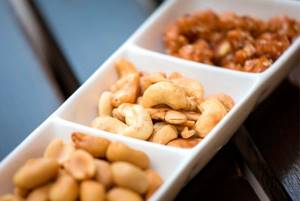
Nuts also provide a lot of energy, so it's good to always have them on hand. But the main problem with nuts is that they can contain extreme amounts of fat, so portion control is a must. Limit yourself to a handful because these guys get eaten too easily and unnoticed!
Let's take a look at this list of nuts and their fat content per 100 grams:
- Almonds: 49 g fat, 78% of calories come from fat
- Brazil nut: 66g fat, 89% of calories come from fat
- Cashews: 44 g fat, 67% of calories come from fat
- Hazelnuts: 61 g fat, 86% of calories come from fat
- Macadamia: 76 g fat, 93% of calories come from fat
- Pecans: 72 g fat, 93% of calories come from fat
- Pine nuts: 68 g fat, 87% of calories come from fat
- Pistachios: 44 g fat, 72% of calories come from fat
- Walnut: 65 g fat, 87% of calories come from fat
This list should not discourage you from eating nuts; on the contrary, it should prove that eating nuts in some quantities is a must.
- Seeds
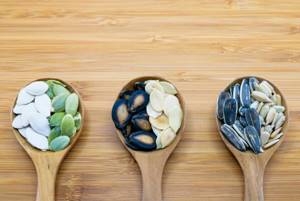
Seeds can be considered like nuts: they are healthy and necessary, but only in small quantities.
Some of the best seeds:
- Chia seeds
- Flax seeds (ground)
- Pumpkin seeds (roasted, no salt)
- Sunflower seeds (roasted, no salt)
Despite their high fat content, chia seeds are very healthy. To be fair, flax seeds are also essential, plus they contain slightly less fat than chia seeds. Flax seeds are a source of fiber, antioxidants and essential omega-3 fatty acids.
By eating pumpkin seeds occasionally, you'll get antioxidants and about 50% of your recommended intake of magnesium. Mercola reports that magnesium is vital for the maintenance of bones, teeth, heart function, relaxation of blood vessels and promotes good digestion.
As for sunflower seeds, they are also rich in antioxidants, as well as fiber and amino acids. It's safe to say that these seeds should become a mandatory part of your diet.
- Nut butter
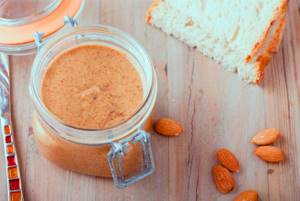
Its properties are similar to nuts. Nut butter is one of those foods that you shouldn't avoid. However, the right type of nut butter is necessary, just as if we were choosing nuts. I don't know about you, but my favorites are almond and nut butters.
Chop up a stalk of celery, add some almond butter, and sprinkle in some hemp seeds or chia seeds instead of the sugary raisins.
Vegetables
- Avocado

When it comes to very fatty foods, control is your best friend.
As you can see in the Guaranteed Nutrition Facts, an average serving of avocado should be about 1/3 of a medium avocado. Eating a whole avocado will provide you with 250 calories and 22.5 grams of fat. Of course, it's okay if you eat the whole avocado because it contains 71% monounsaturated fat, one of the best types of fat.
You'll find about 20 vitamins and minerals in an avocado, fiber, protein, omega-3s, 4 grams of total carbohydrates and about 1.2 grams of available carbohydrates, so an avocado is low in carbohydrates. All these benefits make avocado an essential high-fat food.
- Olives
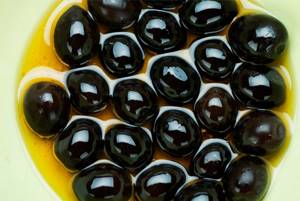
Although olives are thought to be high in fat, they are high in monounsaturated fat, making olives an excellent addition to any diet.
As mentioned earlier, higher amounts of monounsaturated fats can be attributed to balancing blood sugar levels, lowering blood cholesterol, and reducing the risks of heart disease and stroke.
Animal products
- Eggs
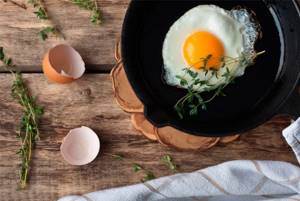
Eggs have a fairly high cholesterol level, but the fat level is also high.
Most of the fat is in the yolk. That's why most people on low-fat diets eat only protein. The only problem is that all the fats found in the yolks are essential.
One large egg contained 1.6 grams of saturated fat, 0.7 grams of polyunsaturated fat, and 2 grams of monounsaturated fat. In addition to the healthy fats, you'll also get vitamins and minerals, thereby improving your metabolism.
- Steaks
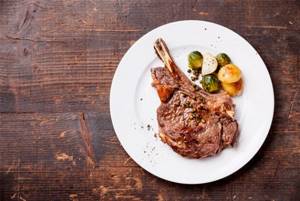
Eating excess red meat can increase iron levels, thereby reducing the elasticity of blood vessels and increasing the risks of type 2 diabetes and Alzheimer's disease.
However, eating meat occasionally, such as two to three times a week, is good for your body
LiveStrong point out the need to buy the right cuts of meat. Some cuts may be higher in saturated fat and cholesterol, while others, such as tenderloin, contain more healthy fats in the right amounts. You can choose bison meat, it is leaner and healthier.
- Fish

Instead of purchasing expensive fish oil supplements, consider eating fatty fish such as salmon, sardines, trout or mackerel.
These types of fish contain high amounts of protein and essential omega-3 fatty acids.
According to the Harvard School of Public Health: “An analysis of 20 studies containing hundreds of thousands of participants found that consuming one or two three-ounce servings of oily fish per week—salmon, herring, mackerel, sprat, or sardines—reduced the risk of heart disease by 36 percent. "
Vegetable fats: composition and nutritional value
The importance of oils as a component of human nutrition is as follows:
- They dissolve vitamins D, A, E. Without combining with lipid, vitamins cannot participate in the body's metabolic processes.
- Fats are associated with substances valuable for health - phospholipids and tocopherol compounds. They have a beneficial effect on the myelin sheaths of brain neurons, blood vessels, vision, and skin condition. Lipid deficiency leads to deterioration in the functioning of these systems and organs.
- Unsaturated acids contained in oils and raw materials for their production help reduce the content of low-density lipoproteins in the body, a type of cholesterol that can accumulate on the walls of blood vessels, causing atherosclerosis.
- Getting enough lipids from food is important for the female reproductive system.
A person who is not overweight can receive about 80 grams of fat per day from food. Half of them are plant lipids.
Be sure to read: Siberian fiber: how to use it correctly for weight loss and health, composition and properties
It is recommended to add oils or seeds to salad or cooked porridge. When they are subjected to heat treatment (including frying in oil), the properties needed by the body are reduced due to oxidation.
Receipt and processing
We will not describe in detail the technologies for obtaining oil and all their possible options. There are two main methods of oil extraction – the pressing method and extraction. In the first case, the mass, pre-treated with moisture and heat, is squeezed out under a press. This method can be considered the cleanest and most environmentally friendly. By the way, the most expensive and healthy olive oil, which can be recognized by the inscription on the Virgin or Extra Virgin packaging, is obtained by cold pressing. The raw material is heated to no more than 27°C. Extra Virgin is characterized by even stricter adherence to technology. The acid content in it should be no more than 1%, and some companies limit it to 0.8%.
But during pressing, a large amount of oil still remains in the raw material. It is not profitable. Therefore, at the next stage - extraction - the oil is extracted using special extraction gasoline. This is already alarming. However, experts assure that if the technologies were followed exactly, the product will not cause any harm. It's best not to buy the cheapest oil.

Categories of vegetable fats
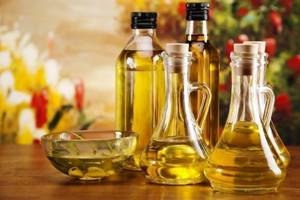
Based on the structure of triglyceride molecules, lipid categories are distinguished:
- Unsaturated ones bring the greatest benefits: they improve vision, texture and appearance of the skin, have an anti-inflammatory effect, and prevent the formation of plaques in large vessels. It is to provide them that oils and seeds should be included in the diet. Among animal products, they are found in marine fish.
- Saturated foods increase the load on the heart and add kilograms. Lard and butter are rich in them, and in any vegetable raw material the percentage of such fats is small.
- Trans fats are produced artificially through the hydrogenation of conventional oils. They have a solid texture and are used in industry to reduce the cost of production as a substitute for expensive animal fats (margarines, dairy products) and vegetable fats (a substitute for cocoa butter in the production of confectionery bars, icing for chocolates). They bring only harm to the body. Research shows that their effects are similar to those of high consumption of saturated fat. They contribute to the development of atherosclerosis and heart disease. It is important to read the ingredients on product labels and avoid purchasing if you see the words “cocoa butter substitute” or “palm oil.”
According to the production method, hot and cold pressed oils are distinguished. With the second method, more substances important for health are retained in the oil. It is recommended to buy only unrefined oils.
Trans fats
Trans fats are dangerous - liquid vegetable oils that have become solid due to hydrogenation - saturation with hydrogen bubbles. The molecular structure of fatty acids is distorted. And this leads to the fact that they are embedded in cell membranes and displace beneficial fatty acids from them, blocking the work of enzymes. Disruption of metabolic processes at the cellular level affects all systems of the body and provokes ailments: from obesity and depression to coronary heart disease and cancer.

A typical example of trans fat is margarine. This is a cheap analogue of butter. It is stored much longer than both animal and vegetable fats. In general, a complete benefit for manufacturers. It only causes harm to consumers. Therefore, you need to avoid margarine and the products that it contains - baked goods, chips and other things. And if you really want cookies or pies, it’s better to bake them yourself using butter.
Is it possible to eat foods high in fat?
The listed products are sources of high concentrations of lipids, so they must be consumed in doses. People who are not overweight should include them in their diet in such quantities that, when converted to pure fat, there is no more than 40 grams per day.
Be sure to read: Healthy fats: list of foods, what are the benefits, what can you eat when losing weight, daily intake
For overweight people, cut this amount in half. Of animal fats, fish rich in essential acids is preferable. If a person does not have signs of atherosclerosis and hypertension, he can also consume butter, fatty cheeses, and lard in limited quantities.
Why eat fat when dieting?
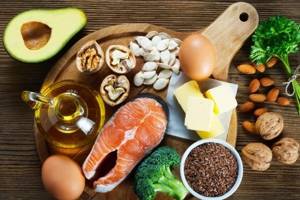
According to medical scientists, the typical nutritional diet of healthy people should include about 30% natural lipids. At the same time, these substances perform a lot of different important functions.
Among them:
- nutritional – as a reserve energy reserve;
- transport - the breakdown of vitamins A, E, D, due to which they are better absorbed and evenly distributed throughout the body;
- supporting thermal energy – helps maintain the stability of normal body temperature and prevent freezing;
- protective – adipose tissue preserves organs and prevents the formation of damage through mechanical action;
- structural - substances participate in the creation of plasma membranes containing cholesterol, which acts as a building material for cells of the brain and nervous system;
- regulating – assistance in the production of sex hormones, improving the functioning of the reproductive system.
A deficiency in food intake that includes fatty acids can cause the development of pathologies:
- deterioration of hair structure, nail plates, skin condition;
- sleep disorder;
- decreased concentration, memory, thinking;
- weakening of volitional behavior;
- increased nervousness, short temper, and anger.
Be sure to read: Slow carbohydrates: list of products, table for weight loss, how much is needed
Is there a connection between fats and weight gain?
The fear of consuming fats due to the possibility of gaining excess weight is associated with their high calorie content - a gram of lipids provides twice as many calories as a gram of proteins or carbohydrates. Indeed, when losing weight, it makes sense to keep the level of fat consumed under control.
However, we should not forget that different nutrients have different effects on biochemical processes in the body. Consumption of the contents of fat reserves begins when glycogen reserves in the liver are depleted and the intake of sugars from food is low, so the creation of a carbohydrate deficiency plays a key role in the process of losing weight.
Fat intake should be 10-20 grams lower than for a thin person. Preference should be given to olive and sesame oils, as well as red fish as sources.
The benefits and harms of vegetable fats
The beneficial effects of these substances on the body are:
- improving the elasticity of vessel walls;
- preventing the deposition of cholesterol accumulations in the lumens;
- formation of the structure of cell membranes;
- easy digestibility, low load on the gallbladder and liver compared to animal lipids;
- improving intestinal motility, alleviating constipation;
- binding of vitamins.
The negative aspects include the effects of trans fats on the body. To avoid it, you need to give up margarines, baked goods containing them, processed cheeses and chocolate-covered sweets.
Also, any fats, including cold-pressed oils, are subject to strict reduction in the diet of patients with inflammation of the pancreas, diseases of the liver and bile ducts.
